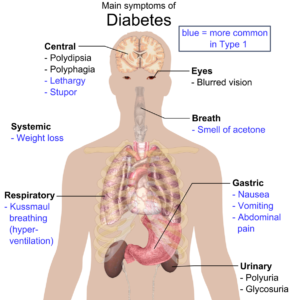88
Multifactorial Disorders

Although complex disorders often cluster in families, they do not have a clear- cut pattern of inheritance. This makes it difficult to determine a person’s risk of inheriting or passing on these disorders. Complex disorders are also difficult to study and treat because the specific factors that cause most of these disorders have not yet been identified. Researchers continue to look for major contributing genes for many common complex disorders.
Genetic Predispositions
A genetic predisposition(sometimes also called genetic susceptibility) is an increased likelihood of developing a particular disease based on a person’s genetic makeup. A genetic predisposition results from specific genetic variations that are often inherited from a parent. These genetic changes contribute to the development of a disease but do not directly cause it. Some people with a predisposing genetic variation will never get the disease while others will, even within the same family.
Genetic variations can have large or small effects on the likelihood of developing a particular disease. For example, certain mutations in the BRCA1 or BRCA2 genes greatly increase a person’s risk of developing breast cancer and ovarian cancer. Variations in other genes, such as BARD1 and BRIP1, also increase breast cancer risk, but the contribution of these genetic changes to a person’s overall risk appears to be much smaller.
Current research is focused on identifying genetic changes that have a small effect on disease risk but are common in the general population. Although each of these variations only slightly increases a person’s risk, having changes in several different genes may combine to increase disease risk significantly. Changes in many genes, each with a small effect, may underlie susceptibility to many common diseases, including cancer, obesity, diabetes, heart disease, and mental illness.
In people with a genetic predisposition, the risk of disease can depend on multiple factors in addition to an identified genetic change. These include other genetic factors (sometimes called modifiers) as well as lifestyle and environmental factors. Although a person’s genetic makeup cannot be altered, some lifestyle and environmental modifications (such as having more frequent disease screenings and maintaining a healthy weight) may be able to reduce disease risk in people with a genetic predisposition.
References
“Mutations and Health”by U.S. National Library of Medicineis in the Public Domain
